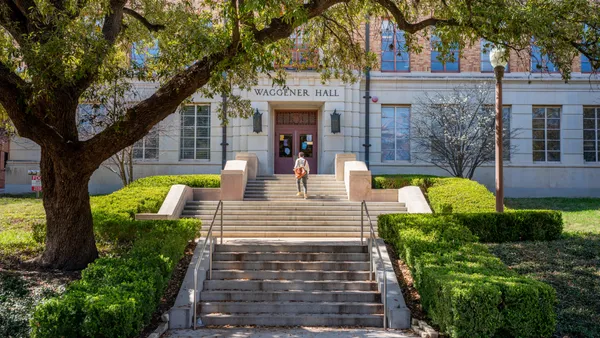Dive Brief:
- The number of students who are older than 24 and enrolled in college declined by 2.7% to 6.2 million in the fall of 2019, according to new data from the National Student Clearinghouse Research Center.
- The adult student population has been declining since the fall of 2011, and it contributed to the continued downturn in college enrollment this year.
- The decrease in adult students occurred across all institution types: public and nonprofit private four-year colleges, public two-year colleges and private for-profit four-year institutions. Students in the traditional college-age range of 18 to 24 are expected to enroll at higher rates than their older peers in the coming years.
Dive Insight:
About 171,000 fewer students over the age of 24 enrolled in college this year compared to a year ago. Overall, enrollment in higher ed fell to less than 18 million students this year, the data shows.
Statistics about adult students are particularly difficult to capture. Adult students may take breaks from their studies periodically, so they may not be included in enrollment counts, R. Lee Viar IV, president of the Association for Nontraditional Students in Higher Education, told The Hechinger Report last year.
The downswing in adult students was most pronounced at public two-year colleges, which lost 3.7% of that population from 2018.
The adult students who those institutions cater to often head to the workforce rather than college when the economy is strong — and it has improved in recent years, Robert Kelchen, a professor of higher education at Seton Hall University, said in an interview with Education Dive. The U.S. unemployment rate was 3.5% in November.
This would also explain the decline in enrollment across the board, Kelchen said. He expects another recession will drive students back to college, bringing an end to the decade-long enrollment slide.
"There's some evidence that people are more skeptical of higher education than they were a few years ago, but that doesn't seem like that's changing whether people go," Kelchen said.
Demographics are also shifting. The number of high school graduates in the U.S. is expected to significantly decrease in the next decade, meaning there will be a smaller pool of prospective college students. A report earlier this year from Moody's Investors Service cited that trend as a potential risk for colleges, particularly smaller schools.
NCES has projected college enrollment for students under the age of 25 to increase by 5% from 2016 to 2027, compared to just 1% for students over 25.
Private nonprofit four-year colleges saw a 5% uptick in adult students in 2018 but lost about 1% this year.
For-profit four-year colleges saw a modest 2% decrease in adult students in 2019 — a far cry from the 16% drop between 2017 and 2018. Kelchen attributed that to a rash of for-profit closures and a wariness of those institutions after the collapses. As of the fall of 2019, fewer than 607,000 adult students were enrolled at four-year, for-profit colleges. In 2017, more than 736,600 adult students attended those institutions.
Colleges have invested in tailoring services such as advising to the needs of adult students — who often are taking their courses online — including by making them available outside of typical business hours.
More colleges are expected to do so in an effort to tap into what has been pitched as a sizable market of prospective students. Clearinghouse research shows about 36 million people, many of them over the age of 24, have completed some college but are no longer enrolled and could return to earn their degree.















